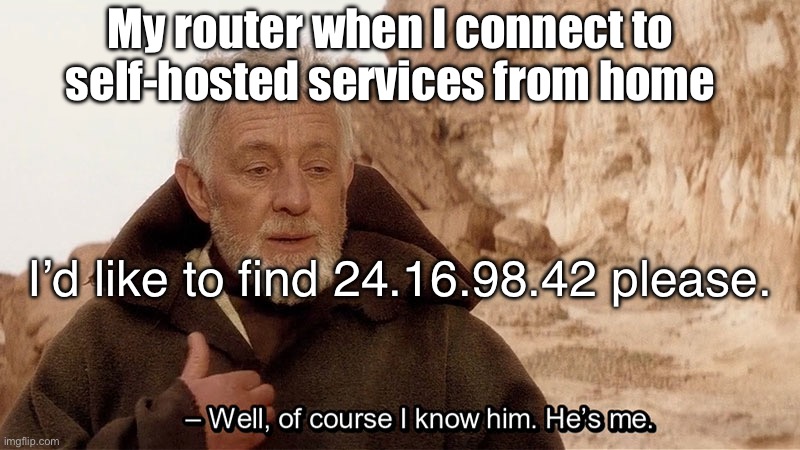this post was submitted on 17 Sep 2023
751 points (97.7% liked)
Programmer Humor
32031 readers
1291 users here now
Post funny things about programming here! (Or just rant about your favourite programming language.)
Rules:
- Posts must be relevant to programming, programmers, or computer science.
- No NSFW content.
- Jokes must be in good taste. No hate speech, bigotry, etc.
founded 5 years ago
MODERATORS
you are viewing a single comment's thread
view the rest of the comments
view the rest of the comments

The client will look up your domain at whatever DNS it uses. It will return your public IP.
Client will send a packet with that as destination. It will reach the router which goes 'I know! The call is coming from inside the house!' and sends it to the server without modification.
The server gets it and sends a response, but the response is addressed back to client's local IP.
Client gets the response, but that packet's origin (in the header) is server's local IP.
Client goes 'wtf, I didn't call you?!' And drops the packet, still waiting for a response with your public IP as its origin.
This can be solved with the router modifying the appropriate traffic's headers so that the headers match the expected, called NAT Loopback, or by using IPv6 global addresses.
It might also work running a local DNS server that returns your server's local IP for a given domain, but that might yield certificate errors, and won't work if devices ignore the DNS coming from DHCP.
I was using straight firewall rules for some years, but lost the template when the NAT Loopback checkbox started working (OpenWRT).
This is a great explanation, I wish I could've got you to explain a bunch of other network stuff to me back when I was learning
Yeah, I just included the DNS part for completion's sake 🙂